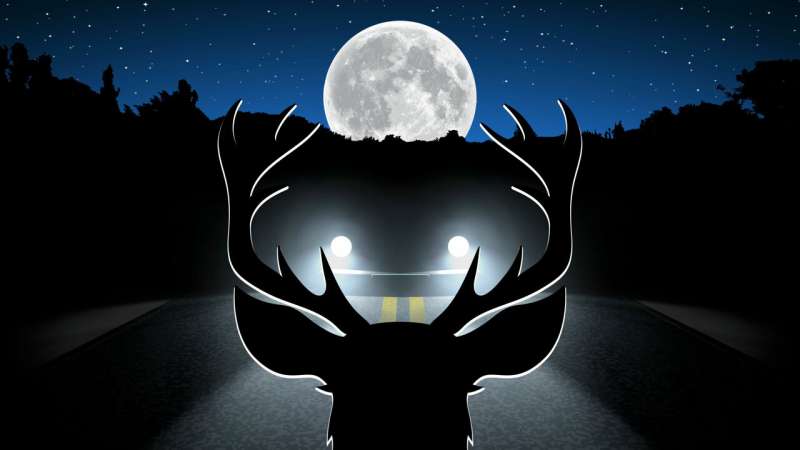Recent research by Texas A&M University has uncovered a startling connection between the full moon and an increase in wildlife-vehicle collisions. This blog post explores the findings and their implications for transportation safety and policy. Learn how the moon’s illumination can impact driver behavior and wildlife activity, leading to a significant rise in accidents. Discover how rural and urban areas are affected differently and what potential solutions experts suggest to mitigate this hazard. Full moon, Wildlife, Road Safety

The Surprising Moonlit Hazard: Wildlife-Vehicle Collisions Spike During Full Moons
The moon’s influence on our planet extends far beyond just affecting the tides. Recent research conducted by Texas A&M University and published in the journal Transportation Research Part D has uncovered a startling trend: a 45.8% increase in wildlife-vehicle collisions during full moon nights.
Kentaro Iio, a former Texas A&M student, and Dr. Dominique Lord, a professor in the Zachry Department of Civil and Environmental Engineering, analyzed 10 years of collision data in Texas. They compared the number of wildlife-vehicle collisions on full-moon nights to those on new-moon nights, and the results were quite eye-opening. Interestingly, non-wildlife collisions during the same time periods showed no significant differences, indicating that the full moon’s impact is specifically tied to wildlife activity.
Illuminating the Dangers: How the Full Moon Affects Driver Behavior and Wildlife Activity
The researchers believe that a combination of factors could contribute to the spike in wildlife-vehicle collisions during full moons. One potential explanation is the increased illumination from the moon, which can affect both driver behavior and wildlife activity.
“I compared really dark nights without moon illumination (new moon) to really dark nights with the full moon illumination,” Iio explained. “If you include other lunar phases in the analysis, they appear on the horizon at different times each day, making it more difficult for true apples-to-apples comparisons.”
Previous studies conducted worldwide, including in regions of Spain, Canada, and Lithuania, have reported similar trends, with increased collision rates during full moons. While the exact reasons may vary, the researchers suggest that driver fatigue at night and heightened wildlife activity could be significant contributing factors.
“Although the illumination is better, it’s still nighttime,” Lord said. “When you drive at night, I’m not sure the illumination from the various perspectives is so much greater compared to daytime.”
The study also delved into the regional differences in Texas, with the capital area being the only region to see a lower relative risk of collisions during a full moon, though the difference was not statistically significant. In contrast, the High Plains, South Texas, Central Texas, and Upper East regions experienced high increases in wildlife-vehicle collision rates, ranging from 57.8% to 125%.
“Rural areas tended to have higher collision ratios concerning the full moon than urban areas,” Iio said. The researchers believe that lower wildlife density and urban light pollution in cities could contribute to the lower results in those areas, as the effect of lunar illumination may be diluted in brighter city environments.
Safeguarding Drivers and Wildlife: Potential Solutions to Reduce Collisions
The findings of this study highlight the importance of increased driver caution, especially on brighter nights. Additionally, the researchers suggest that the insights could inform transportation policy and infrastructure improvements where better safety measures are necessary.
Potential solutions that warrant further consideration and study by experts include increased lighting in rural areas, the addition of wildlife warning reflectors along rural highways, and the deployment of increased emergency services on specific nights. These measures could help mitigate the risks posed by the full moon’s impact on wildlife-vehicle collisions.
While the study did not account for variations in illumination intensity or wildlife species identification by region, future research could address these gaps as more detailed data becomes available. By understanding the complex interplay between the moon, driver behavior, and wildlife activity, transportation and animal behavior experts can work together to develop targeted strategies to enhance road safety and protect both drivers and wildlife.
